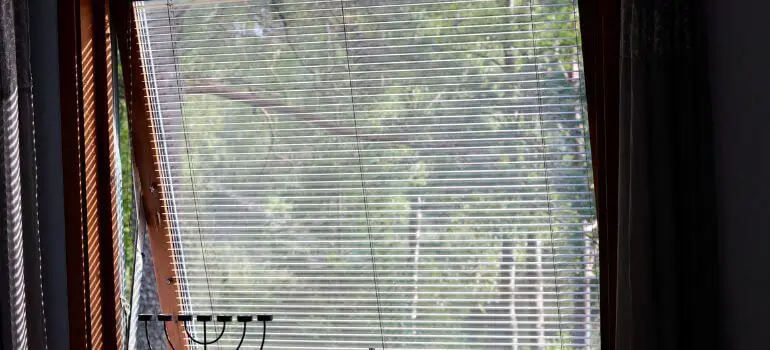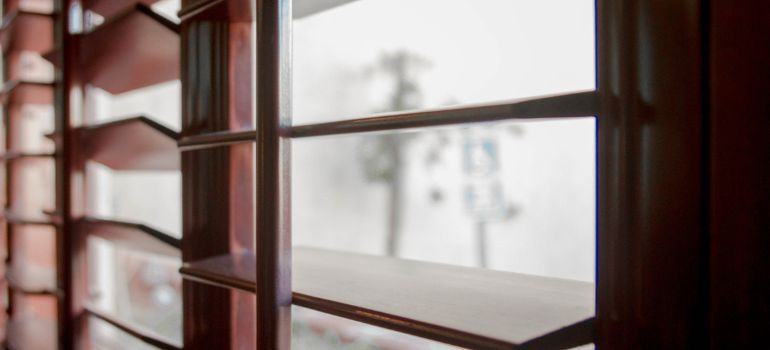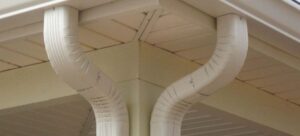Blinds have become an integral part of interior design, providing both functionality and style to any space. Among the myriad options available, faux wood blinds stand out for their affordability and aesthetic appeal. In this comprehensive guide, we’ll delve into the nuances of 2-inch and 2.5-inch faux wood blinds, helping you make an informed decision for your windows.
Understanding Faux Wood Blinds
Faux wood blinds are synthetic alternatives to traditional wooden blinds, crafted from materials like PVC or composite wood. These blinds mimic the look of real wood but come with added advantages such as moisture resistance and durability. Compared to their natural counterparts, faux wood blinds offer a cost-effective solution without compromising on style.
2-Inch Faux Wood Blinds
Overview of 2-Inch Blinds
2-inch faux wood blinds are a popular choice for homeowners seeking a classic and versatile window treatment. Their slim slats provide a timeless look that complements various interior styles, from modern to traditional.
Advantages and Considerations
One of the key advantages of 2-inch blinds is their ability to fit well in smaller windows, creating an illusion of space. However, it’s essential to consider the size of your windows and the amount of natural light you desire when choosing these blinds.
Styling Options
These blinds come in an array of colors and finishes, allowing you to customize them to match your decor seamlessly. Whether you prefer a warm wood finish or a sleek white look, 2-inch faux wood blinds offer plenty of styling possibilities.
2.5-Inch Faux Wood Blinds

Introduction to 2.5-Inch Blinds
Stepping up in size, 2.5-inch faux wood blinds make a bolder statement. The wider slats create a more dramatic look, suitable for larger windows and spaces where you want to make a design impact.
Unique Features and Benefits
The increased width of the slats in 2.5-inch blinds enhances their visual appeal and provides better visibility when the blinds are open. Additionally, they offer enhanced light control and privacy options compared to their smaller counterparts.
Design Possibilities
With 2.5-inch blinds, you can experiment with various wood finishes and stains, adding a touch of luxury to your interiors. These blinds are an excellent choice for rooms with ample natural light, allowing you to showcase their aesthetic qualities.
Comparing 2 vs. 2.5 Faux Wood Blinds
Cost Considerations
While 2-inch blinds are generally more affordable, the pricing difference between the two options is not significant. Consider your budget and the overall aesthetic you want to achieve when making a decision.
Light Control and Privacy
If optimal light control and privacy are top priorities, 2.5-inch blinds might be the better choice. The wider slats provide more coverage when closed, limiting the amount of light entering the room.
Maintenance and Durability
Both 2-inch and 2.5-inch faux wood blinds are known for their durability and resistance to moisture. Regular dusting and occasional cleaning are usually sufficient to keep them in excellent condition.
Installation Process
Installing faux wood blinds is a relatively straightforward process that you can do yourself with the right tools. However, the installation steps may vary slightly between 2-inch and 2.5-inch blinds. Always follow the manufacturer’s instructions for the best results.
Choosing the Right Size for Your Windows
Selecting the right size is crucial for the functionality and aesthetics of your blinds. Measure your windows carefully and consider the proportions of your space to determine whether 2-inch or 2.5-inch blinds are a better fit.
Popular Styles and Colors
Blinds are not just functional; they are also a design element that can elevate the overall look of a room. Explore trending styles and colors to find the perfect match for your decor.
Customer Reviews and Experiences
Real-life experiences can provide valuable insights into the performance and satisfaction of 2 vs. 2.5 faux wood blinds. Read customer reviews to understand the pros and cons from those who have already made these choices.
Maintenance Tips
Faux wood blinds are a popular and practical choice for window treatments, offering the timeless look of wood with added durability. To ensure your faux wood blinds remain in pristine condition and enhance the aesthetic of your space, it’s crucial to follow proper maintenance practices. Let’s dive into some essential tips to keep your blinds looking their best.
Regular Dusting
Dust can accumulate on the slats of your faux wood blinds, affecting their appearance. To prevent this, make dusting a regular part of your cleaning routine. Use a soft cloth or a dusting brush to gently remove any dust or debris. Ensure you reach all the slats, including the often-overlooked top surfaces.
Occasional Deep Cleaning
While regular dusting is essential, occasional deep cleaning is also necessary to maintain the blinds’ overall cleanliness. Mix a mild detergent with water and use a soft cloth to wipe down each slat. Avoid using excessive water to prevent warping. For stubborn stains, a gentle cleanser or white vinegar solution can be effective.
Be Gentle When Handling
When operating your faux wood blinds, handle them with care. Tug or pull the cords gently to avoid unnecessary stress on the mechanisms. Forceful actions can lead to damage, affecting the functionality and appearance of the blinds. Being gentle in your interactions ensures longevity.
Protect from Moisture
Although faux wood blinds are moisture-resistant, prolonged exposure to humidity can impact their condition. Avoid installing them in areas with excessive moisture, such as bathrooms with high humidity levels. If exposed to moisture, promptly dry the blinds to prevent any potential damage.
Check the Hardware
Regularly inspect the hardware of your faux wood blinds. Check for loose screws, damaged brackets, or any other issues that might affect their stability. Tighten screws as needed and address any hardware concerns promptly to ensure the blinds remain securely in place.
Consider Sun Exposure
While faux wood blinds are resistant to fading, prolonged exposure to direct sunlight can still impact their color over time. Rotate the blinds periodically to ensure even exposure to sunlight, preventing uneven fading. Consider using window treatments or shades to reduce direct sunlight if your blinds are in a particularly sunlit area.
Repair Damages Promptly
If you notice any damages, such as chipping or cracking, address them promptly. Most faux wood blinds come with repair kits that include touch-up paint. Use these kits to fix minor damages and prevent them from worsening.
Pet Considerations
If you have pets, especially those with a penchant for scratching or chewing, take extra precautions. Place pet-friendly deterrents near the blinds to discourage unwanted behavior. Additionally, regularly inspect the blinds for any pet-induced damages and address them promptly.
Environmental Impact
As consumers become increasingly environmentally conscious, the impact of our choices on the planet has become a crucial consideration. When it comes to window treatments, understanding the environmental impact of faux wood blinds is essential for making eco-friendly decisions.
Eco-Friendly Aspects of Faux Wood Blinds
Faux wood blinds are crafted from synthetic materials like PVC or composite wood, providing an alternative to traditional wood blinds. While they may not be entirely natural, they offer several eco-friendly advantages:
- Sustainable Sourcing: Many manufacturers use recycled materials in the production of faux wood blinds, reducing the demand for new resources and minimizing environmental impact.
- Durability: Faux wood blinds are known for their longevity. Their durable nature means they require replacement less frequently than other window treatment options, reducing overall waste.
- Energy Efficiency: By providing insulation against heat and cold, faux wood blinds contribute to energy efficiency in homes. This can lead to reduced reliance on heating and cooling systems, lowering energy consumption.
- Reduced Deforestation: Choosing faux wood blinds over real wood alternatives helps preserve forests. Deforestation is a significant environmental concern, and opting for synthetic materials helps curb this impact.
Comparing Sustainability Factors
When evaluating the environmental impact of faux wood blinds, it’s essential to compare them with other window treatment options:
- Real Wood Blinds: While real wood blinds offer a natural and aesthetically pleasing option, their production often involves cutting down trees, contributing to deforestation.
- Aluminum Blinds: Aluminum blinds are recyclable, but the extraction and processing of aluminum can be energy-intensive. Faux wood blinds, with their sustainable sourcing and durability, present a more eco-friendly choice.
- Fabric Blinds: Fabric blinds may involve the use of natural or synthetic fibers. The environmental impact depends on the sourcing and manufacturing processes, making it crucial to choose sustainable options.
Making an Informed Choice
When considering the environmental impact of window treatments, it’s vital to weigh the pros and cons of each option. Here are some factors to consider:
- Recyclability: Check if the faux wood blinds you are considering are recyclable. Some manufacturers offer recycling programs, ensuring responsible disposal at the end of the blinds’ life cycle.
- Energy Efficiency: Consider the impact on energy consumption. Faux wood blinds can contribute to a more energy-efficient home, reducing reliance on heating and cooling systems.
- Longevity: The longer your window treatments last, the less environmental impact they have over time. Faux wood blinds, with their durable nature, often outlast other options.
- Certifications: Look for blinds with eco-friendly certifications, such as those from organizations promoting sustainable practices. These certifications can provide assurance of a product’s environmental credentials.
In conclusion, faux wood blinds offer a compelling option for those seeking an eco-friendly window treatment. By understanding their sustainable features and comparing them with other alternatives, consumers can make informed choices that align with their environmental values.
Customization Options
Make your blinds uniquely yours by exploring customization options. Many manufacturers offer custom sizes and colors, allowing you to tailor the blinds to your specific preferences.
Expert Recommendations
Interior design professionals often have valuable insights into creating a cohesive and visually appealing space. Consider expert recommendations when deciding between 2-inch and 2.5-inch faux wood blinds.
Final Verdict
In the end, the choice between 2-inch and 2.5-inch faux wood blinds boils down to personal preference, budget, and the specific requirements of your space. Both options offer a blend of style and functionality, so weigh the advantages and considerations carefully.
Conclusion
Choosing the right window treatments is a significant decision that impacts the overall look and feel of your home. Whether you opt for the classic appeal of 2-inch blinds or the bold statement of 2.5-inch blinds, faux wood blinds provide an excellent balance of style and practicality.
FAQs
Faux wood blinds are moisture-resistant, making them suitable for humid environments such as bathrooms and kitchens.
While there is a price difference, it’s generally not substantial. Consider the aesthetic impact and your budget when making a choice.
Yes, regular dusting and occasional cleaning with a damp cloth are usually sufficient for maintaining faux wood blinds.
Yes, the installation process is usually straightforward. Follow the manufacturer’s instructions for the best results.
Many manufacturers offer eco-friendly faux wood blinds made from recycled materials. Check product specifications for sustainability details.



